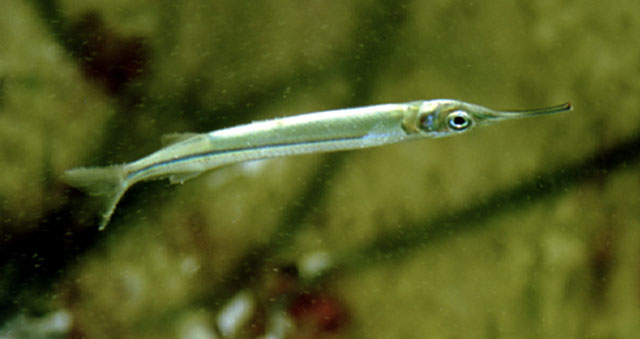| Hemiramphidae (Halfbeaks) |
| 31.2 cm SL (male/unsexed) |
|
pelagic-neritic; freshwater; brackish; marine; depth range - 0 m |
| Indo-West Pacific: in western Pacific, known from Thailand, the East Indies, Borneo, and the Philippines north to China and Nagasaki, Japan, south to New Guinea and northern half of Australia. |
|
Dorsal spines (total): 0-0; Dorsal soft rays (total): 14-17; Anal spines: 0-0; Anal soft rays: 13-17; Vertebrae: 51-56. Prolonged, beak-like lower jaw, shorter than head length, its length contained in 4.7-8.6 times in SL and 1.2-2.0 times in head length; upper jaw short, scaly, blunt and rounded, its width contained in 0.5-0.6 times in its length; preorbital bone 1.75-2.15 times in diameter of orbit and 0.9-1.15 times in length of upper jaw; preorbital ridge present; posterior branch to preorbital lateral line canal present. Total number of gill rakers on first arch 26-39; dorsal fin rays 14-17, usually 16; anal fin rays 13-17, usually 15 or 16. Caudal fin forked, with lower lobe longer than upper. |
| Inhabits more turbid and estuarine situations than does Hyporhamphus dussumieri and is not found in oceanic islands (Ref. 9843). May enter rivers (Ref. 559). Found in medium to large-sized rivers of the lower Mekong (Ref. 12975). Occurs in schools (Ref. 3132). Taken mostly with shore seines; marketed mostly fresh and dried salted (Ref. 9843). |
|
Least Concern (LC); Date assessed: 10 August 2020 Ref. (130435)
|
| harmless |
Source and more info: www.fishbase.org. For personal, classroom, and other internal use only. Not for publication.

